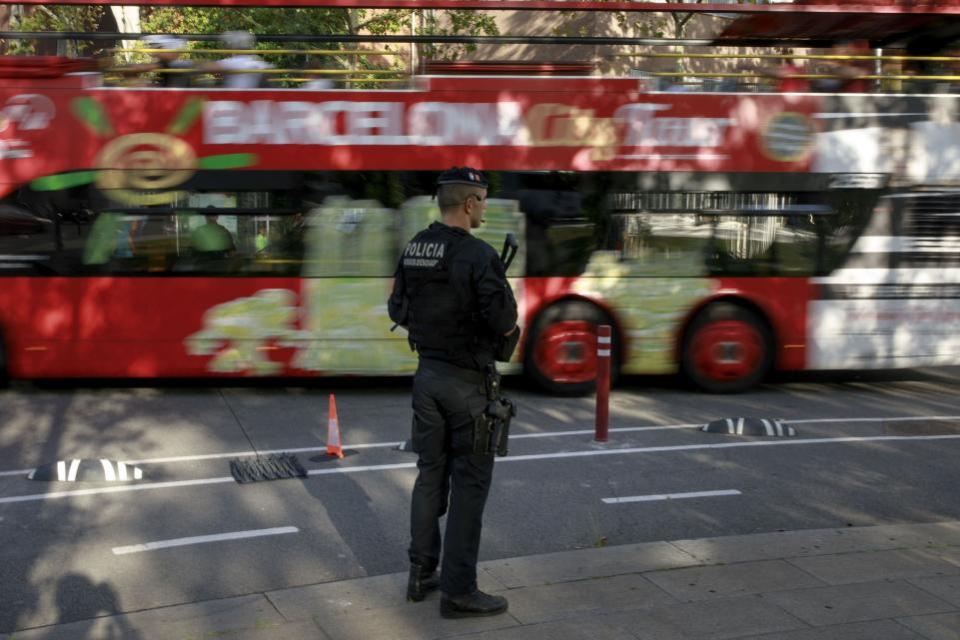Barcelona Attack Manhunt Now Europe-Wide, Police Say
An official in Spain on Monday named the man they believe to be the driver who mowed into pedestrians on Barcelona's famous Las Ramblas boulevard Thursday evening, killing 13 people and injuring over 120 more.
Catalonian police wrote on Twitter they had identified the driver, but did not name him. However, in a radio interview, Catalan interior minister Joaquim Forn said that "everything suggests the van driver is Younes Abouyaaqoub."
Authorities view the 22-year-old Moroccan as the final member of 12-man network that carried out two attacks in the Barcelona region last Thursday and early Friday, the second a vehicle attack in the town of Cambrils that left one person dead. Police detained or shot dead the other members of the cell.
The investigation into the attack is now focusing on how these men came to be radicalized. The lead suspect is Abdelbaki Es Satty, in his 40s, a former imam in the Spanish town of Ripoll near the Pyrenees, where many members of the cell lived. Abouyaaqoub grew up in the town.
Spanish newspaper El Pais published images Sunday purporting to show the main suspect in Barcelona's La Boqueria market, wearing sunglasses and making his escape on foot.

His relatives, speaking to Reuters, said they were shocked at Abouyaaqoub's involvement, as well as that of his two cousins and brother, all of whom were shot dead in Cambrils. All had links to Morocco, with family in the small town of Mrirt.
A cousin said that Mohamed, a cousin of Abouyaaqoub, drank alcohol and went to nightclubs before he became more conservative.
"Up until last year, Younes was totally normal, but when he visited us earlier this year, he refused to shake our hands, just like Mohamed," she said.
The cell carried out vehicle attacks the day after an explosion Wednesday at a house in Alcanar, 120 miles south of Barcelona, appeared to hamper a suspected bomb plot. They were also unable to rent a larger vehicle, according to a counterterrorism expert who spoke to The New York Times.
Popular pedestrian areas have become targets of such attacks since 2016, including the Promenade des Anglais in Nice, France, and Westminster Bridge and London Bridge in Britain. In at least one case before Barcelona, the attacker has managed to escape across Europe, highlighting the difficulty of catching a vehicle attacker who flees in the immediate aftermath.
Anis Amri, who plowed a truck into a Christmas market in Berlin in December, killing 12 people, fled Germany after the assault. The 24-year-old attacker then traveled across four European Union countries—Germany, the Netherlands, Belgium and France—before meeting his end in the Milanese suburb of Sesto San Giovanni, where a policeman shot him dead three days after the assault.
In 2015 the search for Salah Abdeslam, the only surviving member of the Paris attacks cells, took four months; however, he had backed out of particpating in the assault. If the Barcelona attacker is still at large, the search would now be the longest western European manhunt for an ISIS-inspired attacker who went ahead with their plan.
Related Articles
Barcelona Attack: 'The Problem Is Not Immigration,' Says Catalonia's Foreign Minister
Barcelona Chief Rabbi Tells Jews After Attack: 'Get Out, Go To Israel'
Barcelona Attack Suspect Moussa Oukabir Posted 'Kill the Infidels' Online
Barcelona Attack: Police Hunt Jihadi Network After Second Attack Foiled in Cambrils


